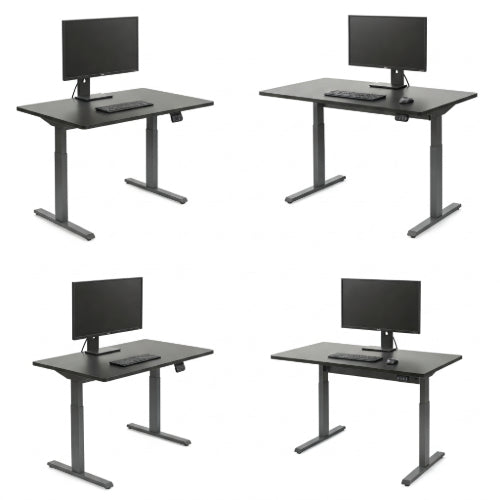Rise to the Occasion: The Benefits of Sit/Stand Desks for Office Health and Productivity
In today's modern office, the conversation around employee well-being is shifting. We're no longer content with simply providing a chair and a desk; we're seeking ways to foster healthier and more productive work environments. One key piece of furniture leading this change is the sit/stand desk, also known as a height-adjustable desk.
For years, the dangers of prolonged sitting have been highlighted. From increased risks of cardiovascular disease and type 2 diabetes to back pain and poor posture, a sedentary workday takes a toll on our bodies. Sit/stand desks offer a dynamic solution, empowering employees to easily transition between sitting and standing throughout the day. But are the benefits truly significant? Let's explore the compelling reasons why sit/stand desks are gaining popularity in offices worldwide.
1. Combat the Dangers of Sedentary Behavior:
The most significant advantage of a sit/stand desk is its ability to break up long periods of sitting. Studies have linked prolonged sitting to a higher risk of various health issues. By offering the option to stand, these desks encourage movement and help combat the negative effects of a sedentary lifestyle. Even subtle shifts in posture and weight distribution while standing can make a difference over the course of a workday.
2. Improve Posture and Reduce Back Pain:
Many office workers experience back and neck pain due to prolonged sitting and poor posture. Sit/stand desks promote better spinal alignment by allowing users to find a comfortable height for both sitting and standing. When standing, individuals are more likely to engage their core muscles and maintain a neutral spine, reducing strain on the back and neck.
3. Boost Energy Levels and Alertness:
Feeling sluggish during the afternoon slump is a common office complaint. Standing up can increase blood flow, delivering more oxygen to the brain and muscles. This can lead to increased energy levels, improved alertness, and a greater ability to focus on tasks throughout the day. Many users report feeling less fatigued and more engaged when incorporating standing periods into their workday.
4. Enhance Productivity and Focus:
When you feel physically better, your cognitive function often follows suit. Studies suggest that the increased energy and reduced discomfort associated with using sit/stand desks can lead to improved concentration and productivity. The ability to change positions can also help combat mental fatigue and keep you more engaged with your work.
5. Promote Better Circulation:
Sitting for extended periods can hinder blood flow, particularly in the legs and feet. Alternating between sitting and standing helps stimulate circulation, reducing the risk of issues like swollen ankles and varicose veins. Improved circulation also contributes to overall energy levels and can have positive long-term cardiovascular benefits.
6. Offer Flexibility and Personalization:
One size doesn't fit all when it comes to ergonomics. Sit/stand desks allow employees to customize their workstation height to their individual needs and preferences, whether they prefer to sit for focused tasks or stand during meetings and calls. This flexibility empowers individuals to find what works best for their comfort and productivity.
7. May Contribute to Weight Management:
While not a magic bullet for weight loss, standing burns more calories than sitting. Over the course of a workday, even a slight increase in calorie expenditure can add up. Combining the use of a sit/stand desk with regular exercise and a healthy diet can be a positive step towards weight management.
Important Considerations for Sit/Stand Desk Use:
While the benefits are clear, it's crucial to use sit/stand desks correctly:
- Start Gradually: Don't try to stand all day from the beginning. Gradually increase your standing time to allow your body to adjust.
- Maintain Proper Ergonomics: Whether sitting or standing, ensure your monitor is at eye level, your keyboard and mouse are within comfortable reach, and your wrists are in a neutral position.
- Listen to Your Body: Alternate between sitting and standing based on how you feel. There's no one-size-fits-all formula.
- Consider Accessories: An anti-fatigue mat can provide cushioning for your feet while standing, and a footrest can be beneficial when sitting.
- Incorporate Movement: Remember that simply standing still for long periods isn't necessarily better than sitting still. Aim to incorporate small movements and shifts in posture while standing.
Conclusion: A Step Towards a Healthier and More Productive Workplace:
Sit/stand desks are more than just a trendy office addition; they represent a growing understanding of the importance of movement and ergonomics in the workplace. By empowering employees to break free from prolonged sitting, these desks offer a multitude of benefits for both physical health and productivity. While it's essential to use them correctly and combine them with other healthy habits, sit/stand desks are undoubtedly a valuable tool in creating a healthier, more engaged, and ultimately more productive office environment. It's time to rise to the occasion and embrace a more dynamic way of working.







